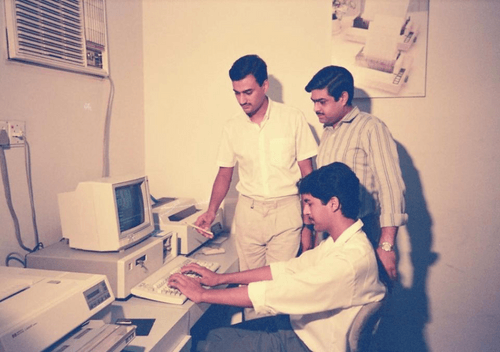Brain – 1st PC Virus
Our History
Brain - 1st PC Virus
The first PC virus, known as the “Brain” virus, was invented in 1986 by two brothers from Lahore, Pakistan, named Amjad and Basit Farooq Alvi, CTO and CEO of Brain. The virus was intended to infect floppy disks and spread to other computers in order to prevent duplication of the brothers’ medical software. The virus was given the moniker “Brain” in honour of the brothers’ computer consulting firm, Brain Computer Services.


The virus would infect floppy discs’ boot sectors, and when a computer booted from an infected disk, it would copy itself to the machine’s memory and infect any subsequent inserted floppy disks. The malware additionally showed a message advising people to be more cautious of the applications they use on their PCs. This was an early instance of how security measures for software might be implemented. It became a reminder that we need to pay more attention about the software we use and the consequences of doing so.
The Brain virus did not corrupt the data on infected computers, but it did show a message instructing the user to contact the virus’s makers for a cure. Amjad and Basit made it clear that they engineered the virus to prevent piracy of their software.
Eventually, the brothers developed a virus cleanup tool, which assisted in reducing the harm. The Brain virus was the first known computer virus that spread over floppy disks, and it became a wake-up call to the computer industry about the need for better security measures. It reminds us of how far we’ve come when it comes to software safety and security ever since.
The Brain virus did not corrupt the data on infected computers, but it did show a message instructing the user to contact the virus’s makers for a cure. Amjad and Basit made it clear that they engineered the virus to prevent piracy of their software.
Eventually, the brothers developed a virus cleanup tool, which assisted in reducing the harm. The Brain virus was the first known computer virus that spread over floppy disks, and it became a wake-up call to the computer industry about the need for better security measures. It reminds us of how far we’ve come when it comes to software safety and security ever since.
Also Featured in
Get exclusive deals by signing up to our Newsletter.

Copyright © 2025 BrainNet Fiber, All rights reserved.







